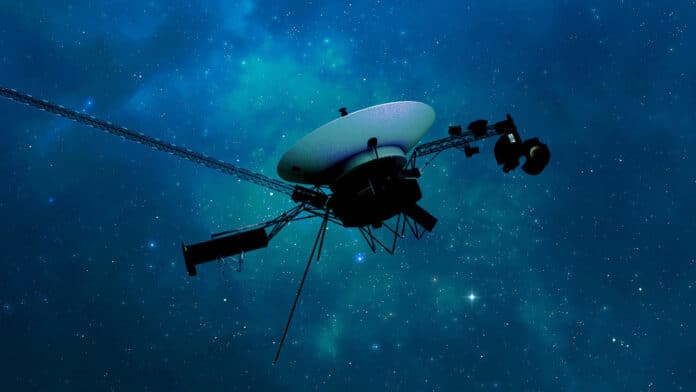NASA’s Voyager 1 spacecraft is finally able to provide usable data about the health and status of its onboard engineering systems – for the first time since November.
The spacecraft and its twin, Voyager 2, are the only ones to ever fly in interstellar space, which is the space between stars.
The Voyager 1 stopped transmitting readable science and engineering data on November 14, 2023, despite remaining responsive to the commands sent by the mission controllers. Recently, the Voyager engineering team at NASA’s Jet Propulsion Laboratory in Southern California has confirmed that the issue was related to the flight data subsystem (FDS), one of the spacecraft‘s three onboard computers, responsible for packaging the data before it’s sent to Earth.
The team discovered that a single chip is responsible for storing a portion of the FDS memory, including some of its software code. Unfortunately, the chip is not functioning properly, and the loss of that code rendered the science and engineering data useless.
Although the team was unable to repair the chip, they devised a plan to store the affected code elsewhere in the FDS memory.
However, since no single location was large enough to hold the section of code in its entirety, the team decided to divide the affected code into sections and store them in different parts of the FDS. They also had to adjust the code sections to ensure that they still functioned properly as a whole and update any references to the location of that code in other parts of the FDS memory.
The team was able to make some progress by isolating the code that’s responsible for packing the spacecraft’s engineering data. They moved it to its new location in the FDS memory on April 18. Due to the vast distance of Voyager 1 from Earth, it takes about 22 ½ hours for radio signals to reach it and another 22 ½ hours for a signal to come back to Earth.
Upon receiving a response from the spacecraft on April 20, the team observed that the modification had indeed worked. This was a significant achievement, as it allowed the mission flight team to check the health and status of the spacecraft for the first time in five months.
The team plans to relocate and adjust the other affected portions of the FDS software in the coming weeks, including the sections that will start returning science data.
Voyager 2, launched over 46 years ago, continues to operate normally. The Voyager spacecraft holds the record for being the longest-running and most distant spacecraft in history. Before the start of their interstellar exploration, both probes flew by Saturn and Jupiter, and Voyager 2 flew by Uranus and Neptune.
